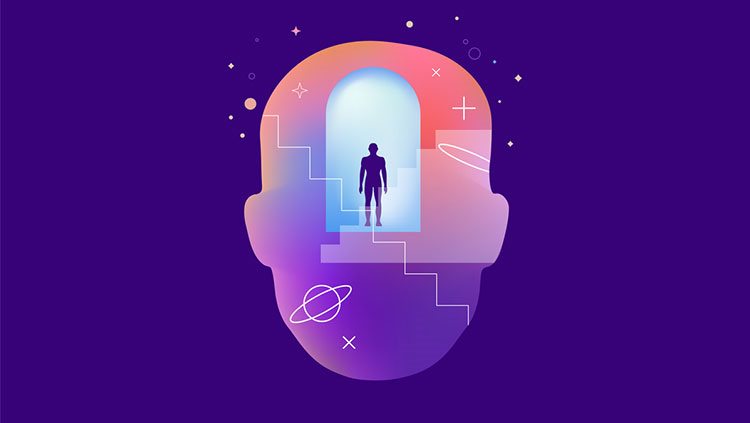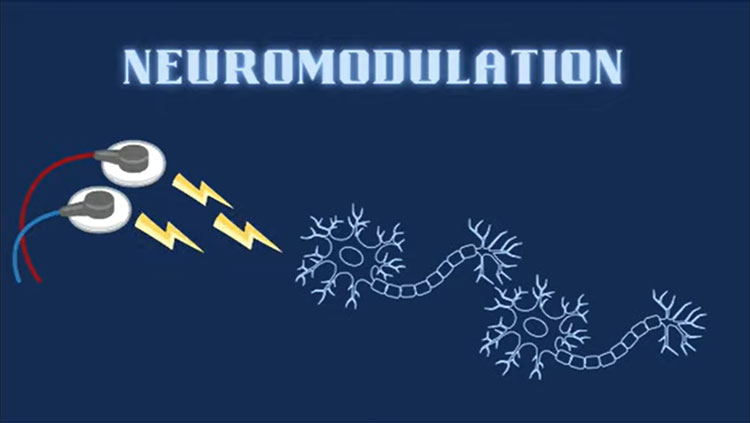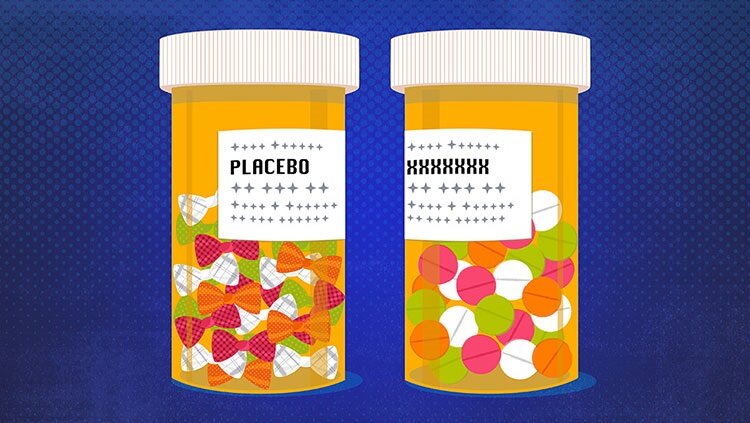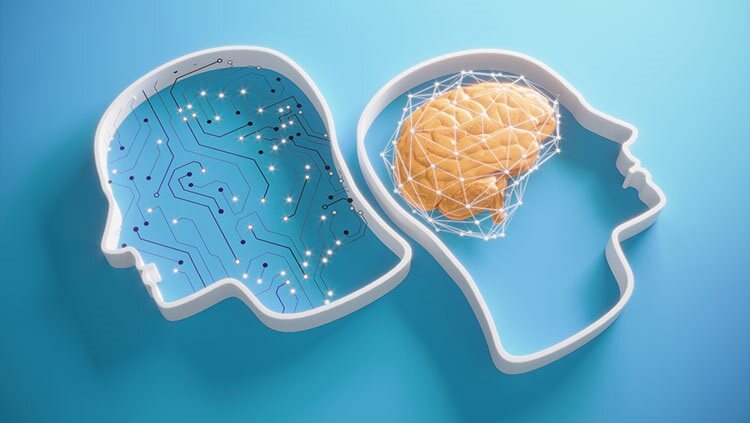Psychedelics Impact Behavior Differently Across Species, Sexes, Doses
- Published2 Jan 2024
- Author Freda Kreier
- Source BrainFacts/SfN
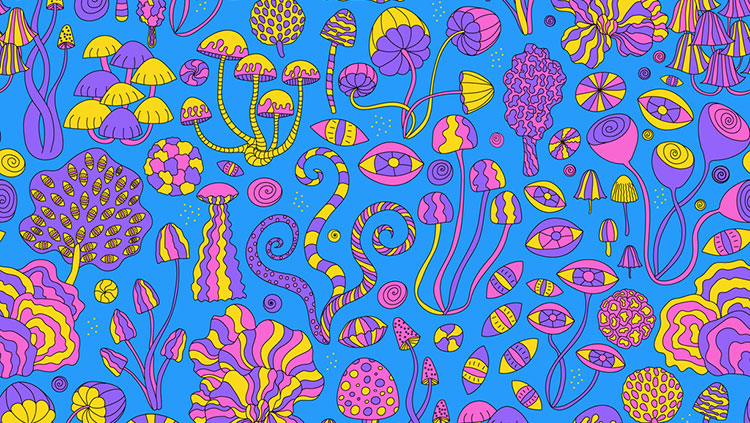
Psychedelic research is experiencing a renaissance. In recent years, a handful of clinical studies have revealed the powerful therapeutic potential of once-untouchable drugs like psilocybin and DMT. The results hint psychedelics could be used to treat a litany of psychiatric illness, ranging from addiction, to depression, to post-traumatic stress disorder (PTSD).
Yet researchers still know very little about how these drugs work. And now, a mixed bag of research presented on November 14 at the 2023 annual meeting of the Society for Neuroscience in Washington, D.C. reveals psychedelics may not always prove a miracle for everyone all the time. Researchers from Ohio Northern University report psilocybin can help male rats overcome a PTSD-esque situation — but seemed to make overcoming trauma harder for females. And research out of the University of Wisconsin-Madison suggests the same treatment, both with psilocybin and DMT, doesn’t work at all in mice.
“It looks like psychedelic-induced alterations in behavior may not be uniform across species, sexes, or even doses,” said John Razidlo, a graduate student at the University of Wisconsin-Madison at the press conference on Tuesday. “This is important as preclinical researchers if we want to extrapolate [these findings] to humans.”
Exactly how these rodent models apply to people is an open question. Part of the problem is how little is known about how psychedelic treatments might work in the brain.
Unlearning for a Change
Research into psychedelics as a potential medical option started picking up steam in the 1950s and 1970s. The work came to an abrupt halt with the passage of the Controlled Substance Act (CSA) of 1970 in the United States. The CSA enforced harsh penalties on the manufacturing, possession, and use of psychedelics. The law heavily influenced the concurrently developing United Nations guidelines for psychedelics. The result: a near global halt to psychedelic research that lasted decades.
Psychedelic research has only recently made a comeback. Today, only a handful of labs across the country conduct studies on these substances in people. One of these locales is Johns Hopkins University, where several studies into psilocybin — the active compound in magic mushrooms — demonstrate promise in helping treat people with depression and substance use disorders.
A leading theory as to why psychedelics succeed where other, more established therapies do not, suggests psychedelics spur the activation of neuroplasticity in the brain. Neuroplasticity refers to the brain’s ability to form new neuronal connections — essentially, its capability to evolve and learn.
Or unlearn, as the case may be for treatments like exposure therapy. For people with PTSD — where the brain has learned to associate a sound, sight, or feeling, with imminent danger — established therapies will introduce people to their perceived threat in a safe environment. The goal is to teach the body to unlearn its association between the trigger and danger. But this process is long and not always effective.
Phillip Zoladz, a professor of psychology at Ohio Northern University, explored whether psilocybin could help speed up the process. He and his colleagues taught rats to associate a sound with a small electrical shock. To simulate exposure therapy, the rats were then re-exposed to the sound without the shock to unlearn the association with danger. Some rats were given a dose of psilocybin before their therapy began.
The team found the male rats receiving a dose of psilocybin became less anxious more quickly than rats that weren’t dosed. But female rats had the exact opposite response — with dosed rats taking longer to unlearn their fear than their sober counterparts.
“The take home message is that psilocybin may augment fear extinction,” Zoladz said during the press event. “However, it depends on biological sex.”
So far, no human studies have come across sex differences when people take psilocybin, says Fred Barrett, director of the Center for Psychedelic and Consciousness Research at Johns Hopkins University. That might be because studies have yet to reach the critical number of people needed to parse out these differences.
No One Trip is the Same
Yet this clear sex message in rats gets muddled when you switch species and psychedelics. Researchers at University of Wisconsin-Madison ran a similar shock experiment in mice. But instead of seeing male mice doing better after getting dosed with psilocybin, the researchers saw no real effect of the drug on mouse anxiety, regardless of whether they were male or female.
The pattern got even messier when they switched drugs. Hoping to find a trend with a better studied psychedelic, the researchers switched from psilocybin to a similar hallucinogen called N,N-Dimethyltryptamine (DMT). The drug only seemed to increase the mice’s anxiety — with dosed mice cowering for longer when they heard the sound.
Clinicians will need to keep these findings in mind when planning clinical trials of psychedelics in the future. But it remains unclear what key factors — be it sex, dose, or other elements — play into whether psychedelics will work to treat psychiatric illness. Given that this research was hobbled by decades of restrictions, scientists are only now beginning to untangle the complex way these drugs might help heal the human mind.
For substance use disorders, we are at least leaning toward some answers. Researchers at Virgina Commonwealth University, for instance, announced they have identified a receptor that likely helps psilocybin kick nicotine addiction in mice.
But for the most part, “we don’t really understand how these drugs actually exert their effects,” said Razidlo. “So, despite promising findings, there’s still more to learn.”
CONTENT PROVIDED BY
BrainFacts/SfN
References
What to Read Next
Also In Therapies
Trending
Popular articles on BrainFacts.org



